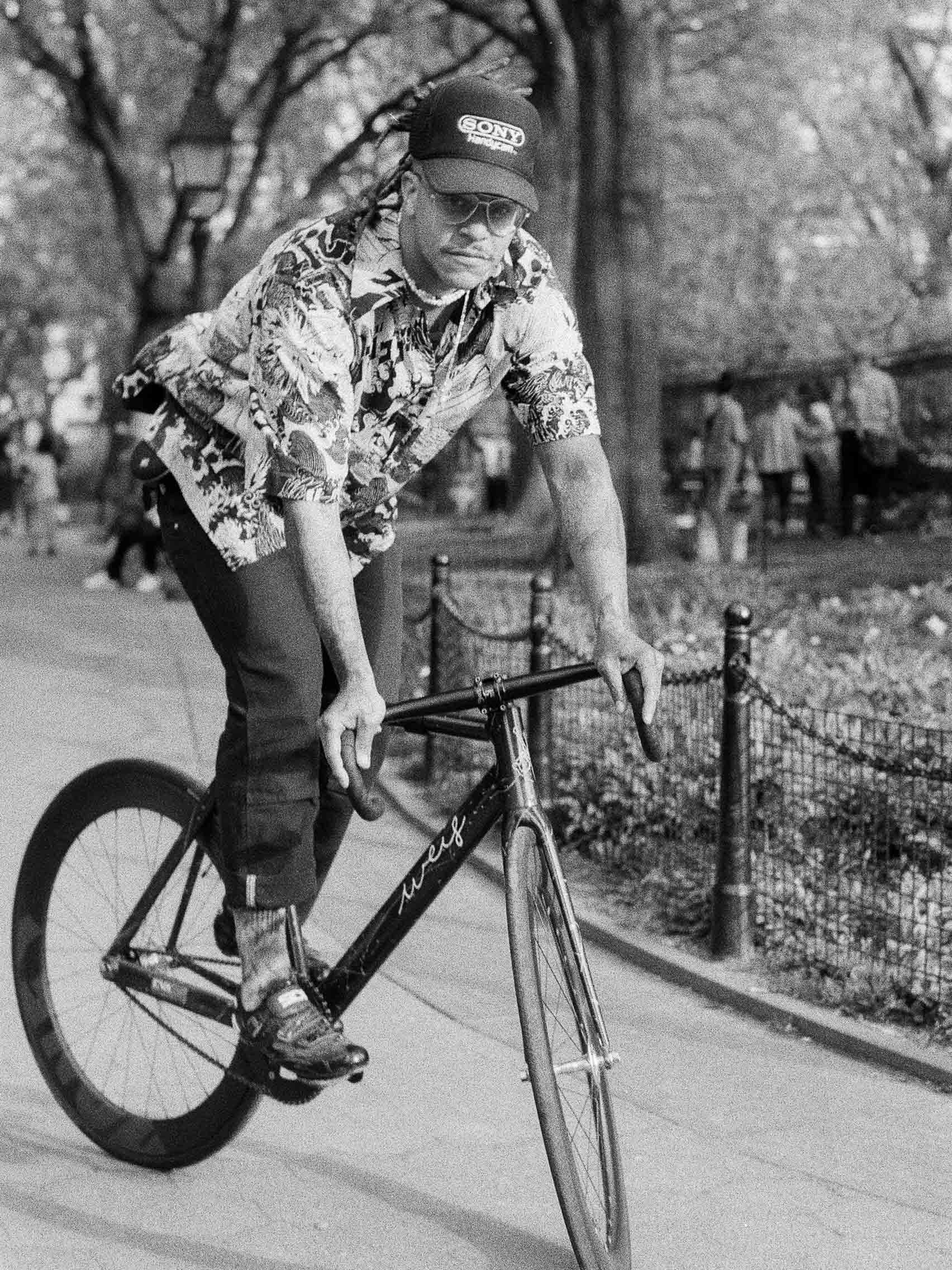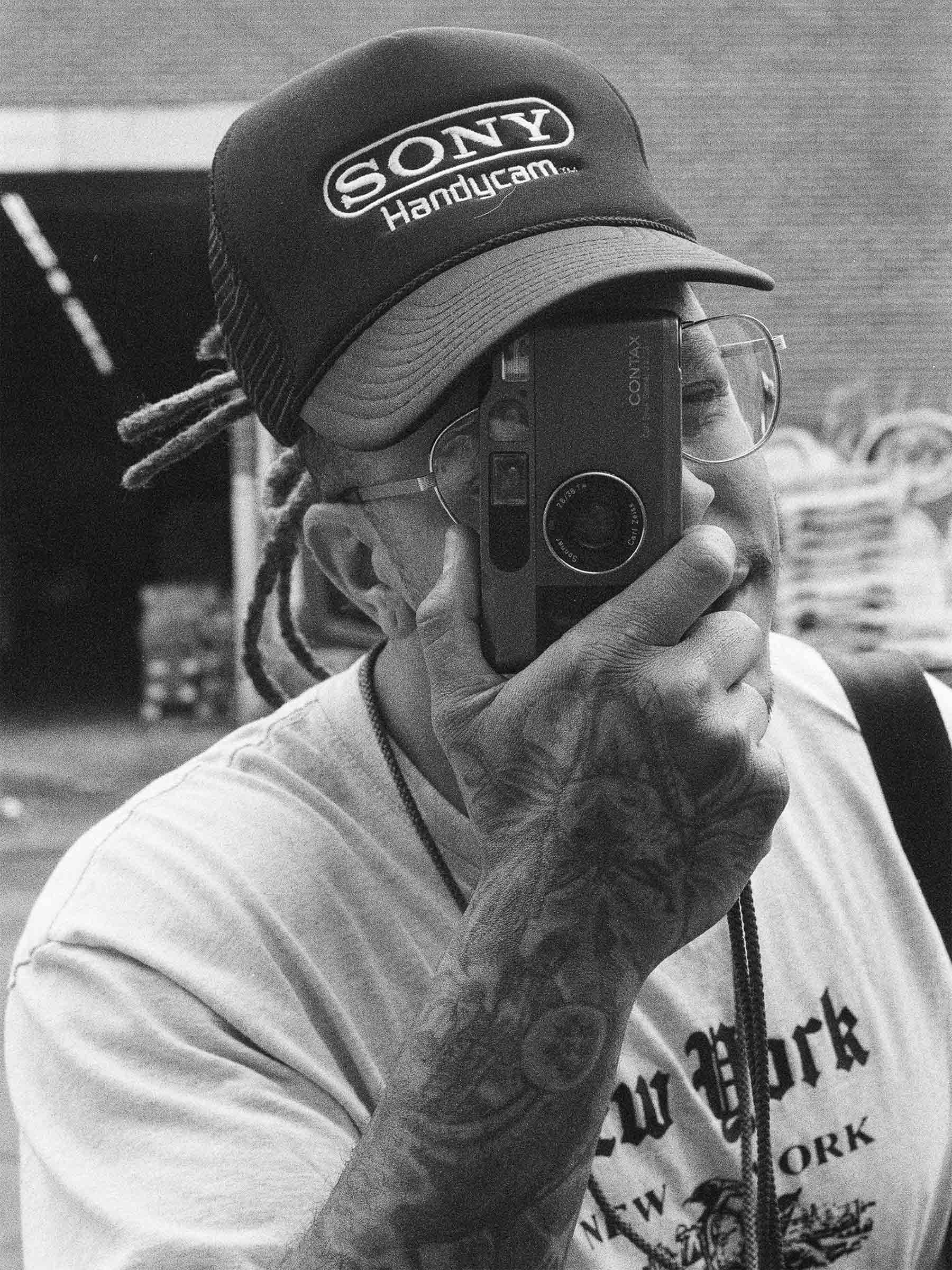Clare: So, on the surface, cycling is this kind of inherently uncool sport known for its tiny hats and tight pants, what made you, photographer, artist, full time cool guy get into cycling?
Nick: I actually got into cycling just before quarantine. I was doing this sober month, just because, quarantine, you know, not much to do, people got bored and...
C: Easy to not be sober...
N: Yeah... very easy to not be sober, exactly. So, I saved up some money and I bought my first track bike, fixed gear, and yeah, from then on I just started to immerse myself in the track bike scene in New York, like alley cat races, and meeting up with other people who were kind of just doing the same thing, you know, getting into cycling over quarantine, and just wanting to get out of the house and explore the city. It was so quiet; it was just the perfect time to ride... boy do I miss that. So that’s how I got in to cycling, it was just like a bug, it bit me and here I am today putting in way more money than I’d like to admit... but it’s worth it.
C: So, Alley Cat races? Can you tell me a little bit more about that?
N: Alley Cat races are like... underground New York City street races.
C: I’m thinking Fast and Furious but with bikes.
N: Kinda, yeah! It’s not like a legally sanctioned race, but you have these checkpoints and usually you have what they call a manifest, this piece of paper and you have to have the person at that checkpoint sign off. And they’ll make you do funny things like you have to do 50 pushups, you have to do 10 jumping jacks, you gotta name the capital of a random state before they can sign your thing. And the first person to hit all of those checkpoints in whatever order you want wins and gets some kind of prize, or just New York City cycling clout. So there’s a ton of people who do that and that’s sort of where I’ve found my niche.
“I find New York City cycling scene to be so unique solely because you have to have some level of grit to get around.”
C: So, in my mind, New York City isn’t exactly a cycling hub, it’s really hard to get around, you know you’re not really gonna go on a long ride in Manhattan, so can you offer your own definition of New York City cycling culture? What about it do you love the most? What makes New York unique?
N: I find New York City cycling scene to be so unique solely because you have to have some level of grit to get around. You gotta be kinda cool with running red lights... lemme not sound like the bad cyclist guy here... the chances of you getting hit aren’t zero... Yeah, I would say grit is what really defines NYC cyclists. And, you know, there are a lot of cool parks where you can go and get your laps in like Prospect Park and Central Park and all that but going around and around in circles is not so fun...
C: You live Upstate a bit, is it lots different up there?
N: Yeah, yeah, it's definitely way different up there, it also sucks having a brakeless track bike Upstate.
C: Oh wow! What? How do you use a brakeless track bike in the city?
N: You just don’t stop... you’re more likely to get hurt stopping than just blowing through traffic. I have been hit a few times; it comes with the territory. But, purist cyclist cultures just hate this. They’re not such a fan of the whole alley cat, messenger, track bike cyclist dudes. You know, it’s really not a functional bike to ride at all. There’s just something to it that you just gotta be super connected to. Your legs are moving at the same cadence that your pedals are moving, if your bike’s sitting still, the pedals aren’t moving once the bike gets in motion... it doesn’t coast. So there’s something special and intimate about that I guess.
C: Do you define yourself as an artist? Creative? Photographer? How would you define what you do?
N: My practice, my career now, is photography, I don’t dabble in too much else as far as commodity goes, but I do like making things. I like working on my bike, I like working on my truck. I like creating: tailoring things in my life to kinda represent me in a way, you know? I like to think that everything that we do is somewhat of an extension of ourselves.
C: So, tell me a bit about your art and what you do. Who’s your inspiration? What’s important for you to convey in your work?
N: Primarily, I work as a photographer for a very progressive clothing brand known as Chnge. And I’ve worked with a lot of activists trying to showcase more inclusivity in my work and sharing a perspective that is not commonly highlighted. That’s in my career work, but I try to implement it into my personal work as well. But, you know, I like to keep things on a softer note. I am trying to move forward with more humor and less seriousness. The world is so serious right now, it’s upsetting to read the news at any given moment. So if there’s something I can put out there that brings a smile to someone’s face, like my goofy antics, or like my photos that look pretty strange. As for inspiration, I would say right now there’s this photographer called Robbie Aubspurger, he does some really funny work, a lot of strange portraits that look like they’re from the seventies, or photos of hotdogs on top of roman architecture...I love his take on photography, it’s not the serious, medium format portrait... that’s all be seen before.
C: Last question: where do you get your highs? Take it as you like.
N: I am definitely somewhat of an adrenaline junkie. I like to take risks and put myself into situations that are a little sketchy, just to feel something I guess.






